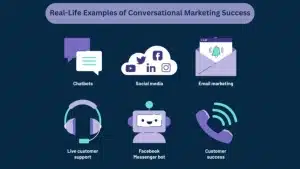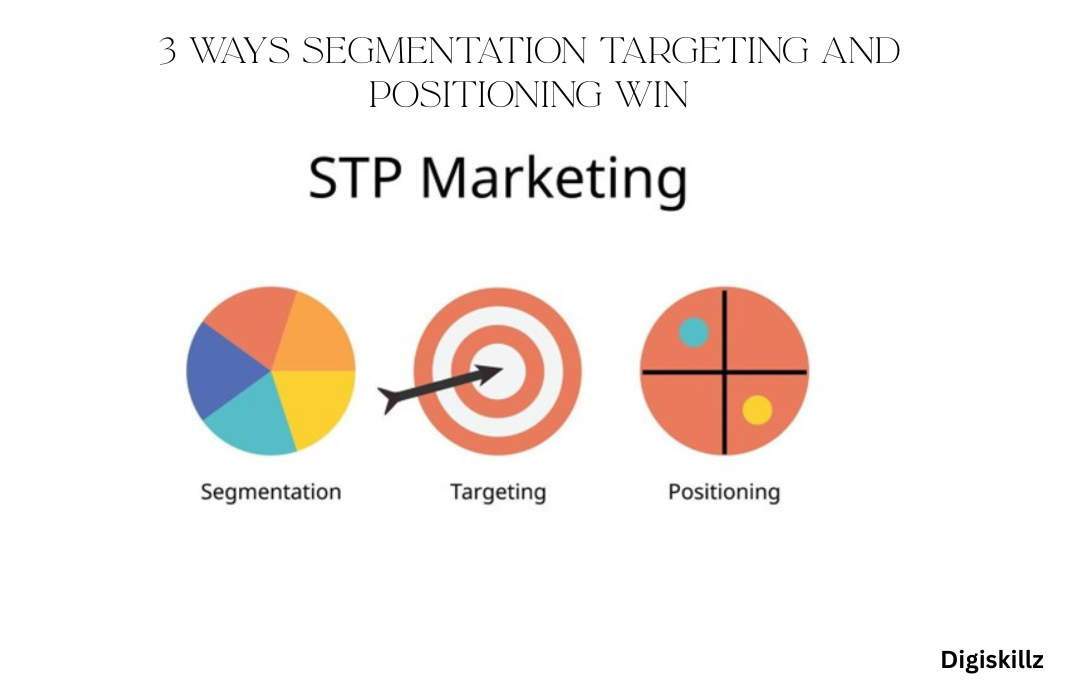In the fast-paced world of today, consumers desire connection and ease. The digital age has shifted the dynamics of customer engagement, with businesses scrambling to meet rising expectations for fast, personalized, and meaningful interactions. Enter conversational marketing, a transformative strategy designed to foster real-time, two-way communication between brands and their audiences.
Conversational marketing goes beyond traditional marketing methods, focusing on authentic, one-on-one interactions that build trust, enhance customer experiences, and drive measurable results. Whether through chatbots, live chat, or messaging apps, this strategy delivers instant, personalized solutions tailored to the customer’s unique needs.
Let’s take a comprehensive look at what conversational marketing is, its significance, benefits, strategies, tools, and how businesses across industries can implement it effectively.
Table of Contents
What is Conversational Marketing?

Conversational marketing is a customer-centric approach that prioritizes two-way, real-time communication over traditional, one-sided advertising. Unlike conventional marketing, which broadcasts messages to large audiences, conversational marketing focuses on direct interactions that cater to individual preferences.
The key elements of conversational marketing include:
- Personalized Interactions: Tailoring messages to resonate with individual customers.
- Real-Time Engagement: Providing instant responses to customer inquiries.
- Human-Centric Approach: Making every interaction feel genuine, even when using automation.
Examples of conversational marketing tools include chatbots, live chat features on websites, messaging apps, and AI-driven assistants. These tools facilitate instant communication, making the process seamless and customer-friendly.
For instance, when a customer visits an online store, a chatbot might pop up to assist with product recommendations, answer questions about shipping, or help complete the purchase—all in a conversational tone.
Why Conversational Marketing Matters

Businesses need to adjust as consumer expectations change in order to stay competitive. Conversational marketing has emerged as a critical strategy for several reasons:
- Instant Gratification: Modern customers value speed. Real-time interactions help resolve issues or queries instantly.
- Enhanced Customer Engagement: Meaningful conversations foster deeper connections, making customers feel heard and valued.
- Increased Conversion Rates: Direct engagement reduces friction in the buying process, increasing the likelihood of a sale.
- Improved Brand Loyalty: Personal, authentic communication strengthens customer trust and loyalty.
- Actionable Insights: Conversations provide data that can be analyzed to better understand customer needs and preferences.
Businesses that embrace conversational marketing gain a significant edge in delivering memorable customer experiences, building relationships, and boosting sales.
The Key Features of Conversational Marketing

- Real-Time Communication: Conversational marketing enables instant responses, eliminating the frustration of waiting for email replies or phone call queues.
- Personalization: Using data-driven insights, businesses tailor conversations to individual customers, making interactions feel relevant and meaningful.
- Omnichannel Integration: With the right tools, brands can engage customers across multiple platforms, such as social media, email, websites, and messaging apps.
- Scalability: Automation tools like chatbots allow businesses to manage multiple conversations simultaneously, ensuring seamless communication as demand grows.
- Human-Like Interaction: Even automated conversations can feel authentic with the use of natural language processing (NLP) and AI, which mimic human conversation styles.
The Benefits of Conversational Marketing

Conversational marketing offers several benefits for businesses aiming to improve their customer engagement strategies:
- Faster Lead Conversion: Conversational marketing reduces the time it takes for a lead to convert by addressing concerns, answering questions, and guiding customers through the buying process in real-time.
- Enhanced Customer Satisfaction: Quick responses and personalized solutions lead to happier customers who are more likely to return and recommend your brand.
- Cost Efficiency: By automating repetitive tasks through chatbots and AI tools, businesses save on staffing costs without compromising service quality.
- Better Data Collection: Every interaction provides valuable data, offering insights into customer behavior, preferences, and pain points.
- Improved Customer Retention: Regular, meaningful interactions strengthen relationships, fostering loyalty and long-term engagement.
How Conversational Marketing Works

Conversational marketing follows a structured approach to create seamless and impactful customer interactions:
- Start the Conversation: Conversations can begin through a chatbot on a website, a message sent via social media, or a query submitted through email. Businesses often use pop-ups or proactive messages to invite customers to chat.
- Understand the Customer’s Intent: AI-powered tools analyze the conversation to understand the customer’s needs, preferences, and pain points.
- Provide Personalized Solutions: Based on the customer’s input, businesses offer tailored recommendations, resolve issues, or guide them toward the next steps in their journey.
- Follow Up and Nurture: Post-conversation follow-ups, such as personalized emails or exclusive offers, help maintain the relationship and encourage future interactions.This process ensures that every interaction adds value to the customer experience.
Top Tools for Conversational Marketing

The effectiveness of conversational marketing largely depends on the tools you use. Here are some of the best options:
- Chatbots: AI-powered chatbots like Drift, Intercom, and HubSpot streamline communication by handling routine queries and assisting with sales.
- Live Chat Software: Platforms like Zendesk Chat and LiveChat enable real-time communication with human agents for complex or nuanced issues.
- Social Media Messaging: Apps like WhatsApp, Facebook Messenger, and Instagram Direct allow businesses to engage customers on their favorite platforms.
- Voice Assistants: Voice-enabled devices like Alexa and Google Assistant offer hands-free interaction channels, making it easy for users to communicate with brands.
- CRM Tools with Conversational Features: HubSpot, Salesforce, and Zoho CRM integrate conversational marketing into broader customer relationship management strategies.
Your industry, target audience, and particular business objectives will all influence the tool combination you choose.
Best Practices for Implementing Conversational Marketing

To maximize the impact of conversational marketing, consider these best practices:
- Focus on the Customer’s Needs: Understand your audience’s preferences and tailor your conversational strategies accordingly.
- Use Data Wisely: Leverage data to personalize interactions and predict customer needs.
- Be Omnichannel: Ensure customers can connect with your brand seamlessly across various platforms and devices.
- Balance Automation and Human Interaction: While AI tools are effective for routine queries, ensure human agents are available for more complex or sensitive conversations.
- Optimize for Mobile: With a growing number of users accessing the internet via mobile devices, ensure your conversational tools are mobile-friendly.
- Regularly Evaluate and Adjust: Monitor performance metrics like response times, customer satisfaction rates, and conversion rates to refine your strategy.
Conversational Marketing Applications Across Industries

- E-Commerce: Chatbots assist customers with finding products, answering FAQs, and guiding them through checkout processes.
- Healthcare: Virtual assistants handle appointment scheduling, provide health information, and follow up with patients post-treatment.
- Financial Services: Chatbots help users check account balances, learn about financial products, and apply for loans.
- Education: Universities use chatbots to answer inquiries about admissions, course details, and campus events.
- Travel and Hospitality: Businesses use conversational tools to manage bookings, provide travel updates, and recommend activities.These illustrations show how conversational marketing may be used in a variety of industries.
Challenges of Conversational Marketing

While conversational marketing offers numerous benefits, businesses must address certain challenges:
- Privacy Concerns: Customers are often hesitant to share personal information. Businesses must implement robust data security measures and communicate their policies clearly.
- Poorly Designed Chatbots: If a chatbot fails to understand queries or offers irrelevant responses, it can frustrate customers and harm the brand’s reputation.
- Scalability Issues: Managing a growing number of conversations while maintaining personalization can be challenging for large businesses.
- Over-Reliance on Automation: While automation is efficient, too much reliance on it can make interactions feel impersonal.
To overcome these challenges, businesses need a balanced approach that combines technology with a human touch.
Real-Life Examples of Conversational Marketing Success

Conversational marketing has transformed how businesses connect with customers, with numerous brands achieving remarkable success. One standout example is Domino’s Pizza, which revolutionized ordering with its “Domino’s AnyWare” initiative. By integrating conversational interfaces into platforms like Facebook Messenger, Slack, and voice assistants, Domino’s made ordering a pizza as simple as texting, resulting in boosted customer satisfaction and sales.
Another success story is Sephora, which uses chatbots on messaging platforms like Facebook Messenger to offer personalized beauty advice. Customers can book in-store appointments, receive tailored product recommendations, and get beauty tips in real-time. This strategy enhanced customer engagement and loyalty, making Sephora a leader in digital innovation.
The conversational marketing platform Drift provides examples of how B2B companies might be successful. Their chatbot automates lead qualification and schedules sales meetings instantly, eliminating delays and creating a seamless customer experience. Companies using Drift reported shorter sales cycles and higher conversion rates.
Lastly, Spotify leveraged conversational marketing with a chatbot that helps users discover music and create playlists based on preferences. Customer engagement was increased and brand loyalty was strengthened by this interactive experience.
These examples demonstrate how leveraging conversational marketing can drive sales, enhance customer experiences, and foster long-term relationships with audiences
The Future of Conversational Marketing

Conversational marketing is revolutionizing how businesses interact with their audiences, promising a future driven by personalized, real-time engagement. This dynamic approach leverages chatbots, AI, and live interactions to deliver tailored experiences, foster trust, and streamline the customer journey.
In the years ahead, AI-powered chatbots will become even more sophisticated, seamlessly mimicking human interactions while providing 24/7 support. Voice assistants like Alexa and Siri are expected to play a larger role in conversational marketing, allowing businesses to reach consumers in entirely new ways. Additionally, the integration of conversational marketing with social media platforms and messaging apps will ensure brands meet customers where they already spend their time.
The rise of predictive analytics will enable hyper-personalization, helping businesses anticipate customer needs before they articulate them. Ethical data usage and transparency will also become pivotal, as consumers demand privacy alongside personalization.
Ultimately, conversational marketing’s future is about creating deeper connections, empowering customers to communicate on their terms. As technology advances, this approach will redefine the relationship between brands and customers, making marketing more engaging, efficient, and human-centric.
Conclusion
Conversational marketing is revolutionizing the way businesses connect with their customers. By fostering real-time, personalized interactions, it builds trust, enhances customer satisfaction, and drives sales.
Whether you’re a startup or an established enterprise, adopting conversational marketing is essential for thriving in today’s customer-driven market. Start leveraging this powerful strategy today and see the difference it can make for your business.
Author : Mohammed Savad
Learner of Digiskillz, Digital marketing course in Kottakkal











Leave A Comment